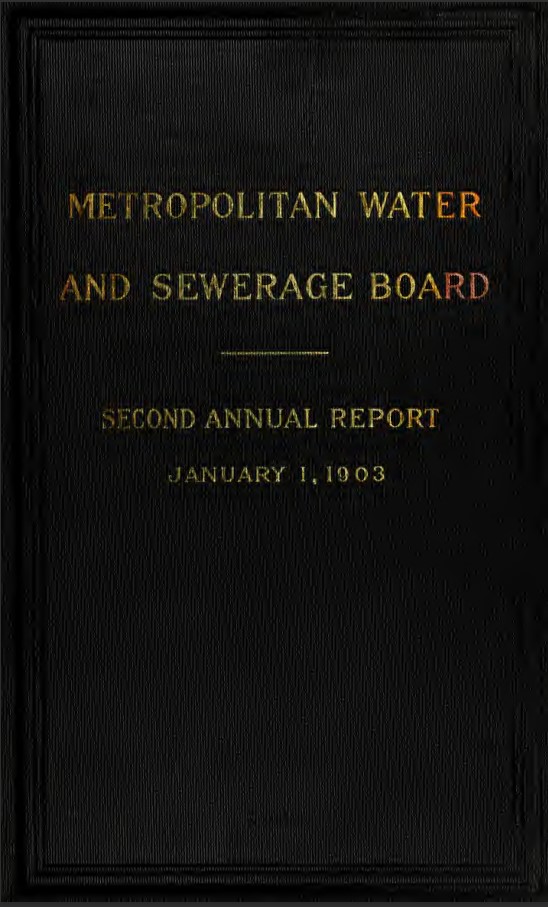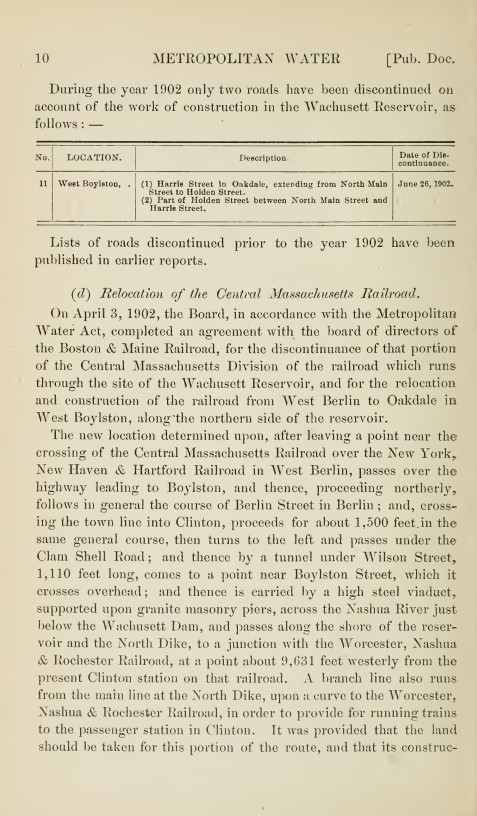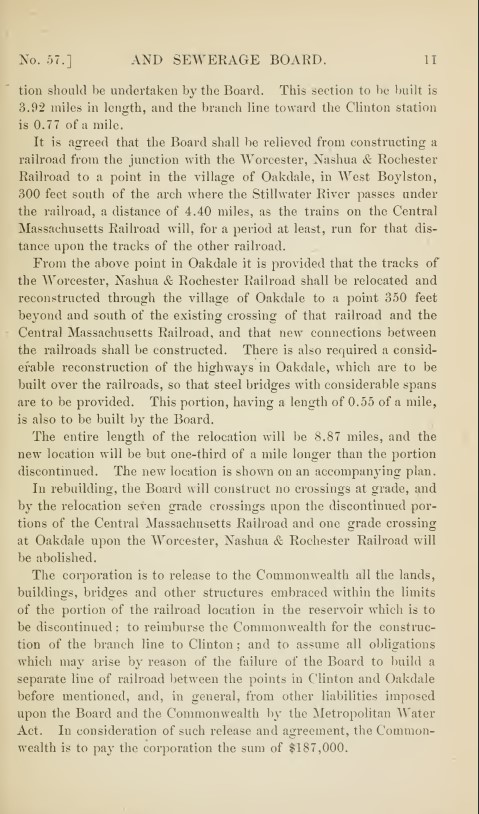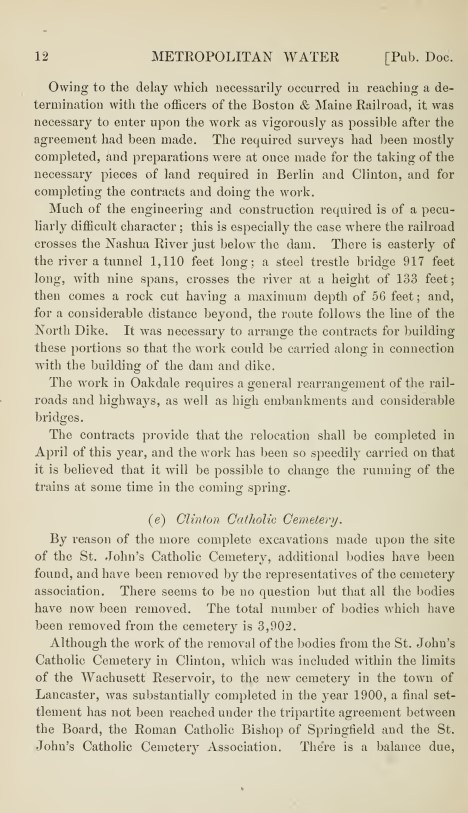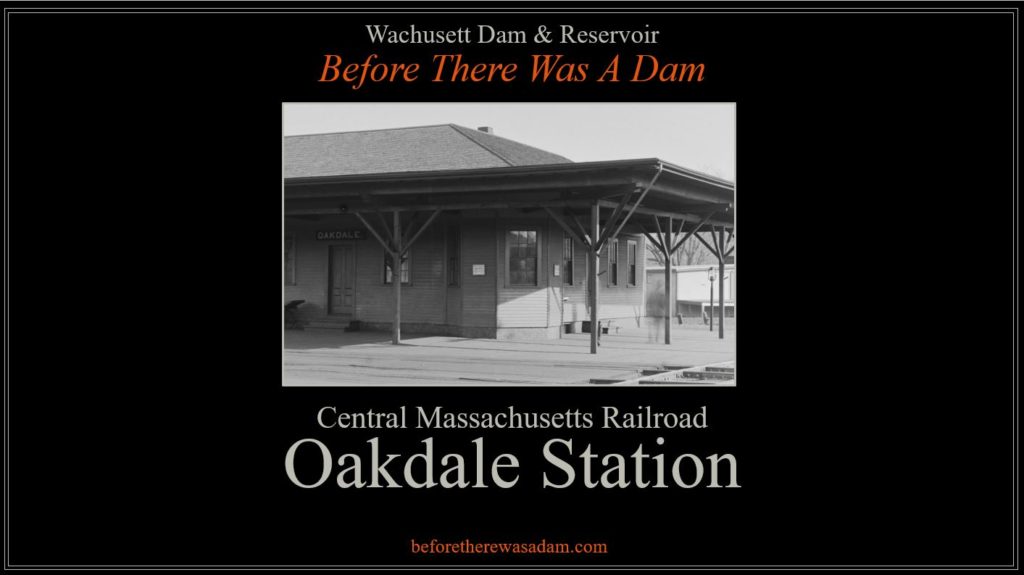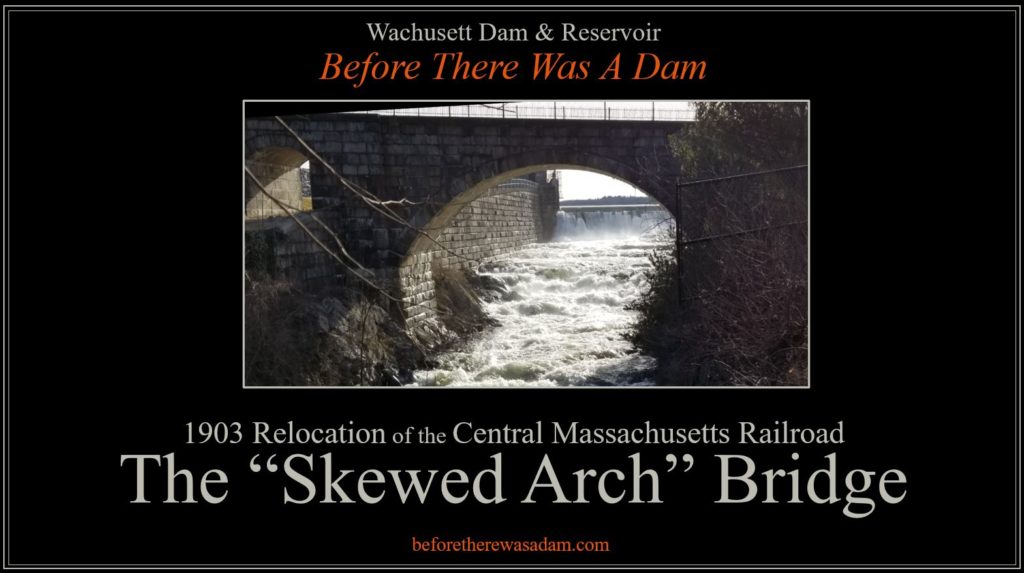Since the enactment in 1895 by the Legislature of the Metropolitan Water Act, it was understood that the portion of the Central Massachusetts Rail Road (CMRR) passing through and under the future Great Reservoir would have to be relocated, without interruption to regular service, to a safe route on higher ground.
The elimination and replacement of passenger service to the station serving Clinton dictated a more northerly route while at Oakdale the land submergence required the moving of the station house and some significant track realignments.
Negotiations between the Metropolitan Water Board (the Board) and the Boston & Maine Rail Road (B&M) for a suitable route from Berlin to Oakdale were long and protracted, with numerous plans and schemes for alternative routes studied and proposed.
It was not until 1902 when, with the waters rising ominously behind the new dam, an agreement was finally reached between the parties.
The new route of the CMRR would leave the line at Berlin, skirt the new Reservoir through Clinton to the north, run through Sterling for a distance upon the tracks of a neighboring rail road and rejoin itself at the station in Oakdale. Service to Clinton would be restored with the addition of a separate branch leading to its passenger station near Water Street.
In the following few pages, with copies taken from the original Annual Report (1902) of the Metropolitan Water Board to the Legislature in Boston, a more detailed commentary is presented and analyzed below.
Thanks,
Paul
These are detail sheets on the various sections of the Relocation
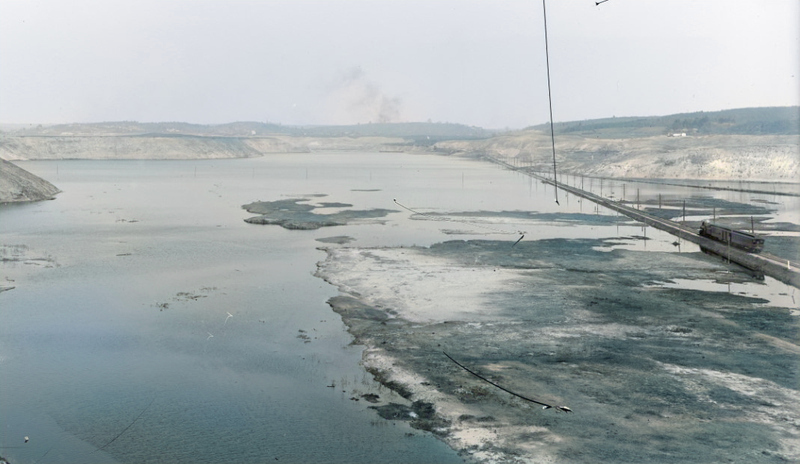
The Last Train
This photo of one of the last commuter trains graphically illustrates the race between the new construction and the inexorable rise in the water level behind the new dam.
Annual Report of the Chief Engineer describing the various parts of the track relocation.
